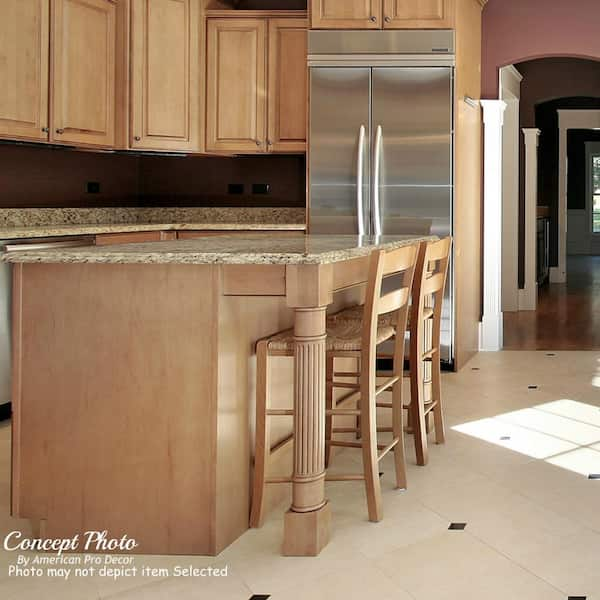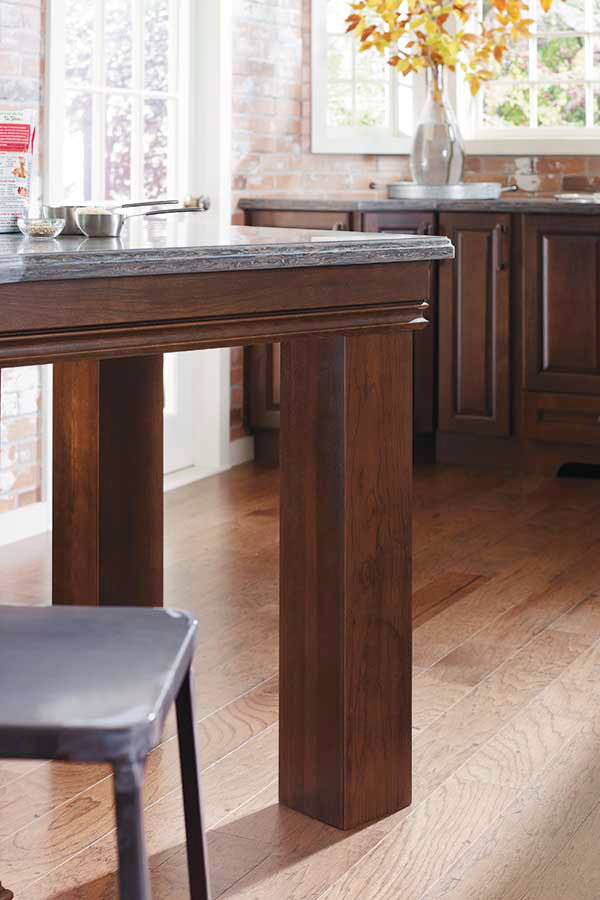Kitchen Island Legs: Improve Your Kitchen with Strong Support
An Overview to Selecting the Perfect Kitchen Area Island for Your Home
Understanding your kitchen area's spatial characteristics is the preliminary action, making certain that the island fits flawlessly without disrupting the flow. The choice of materials and finishes also plays an essential role in integrating the island with your kitchen area's general layout.
Examining Your Space
Prior to picking a kitchen island, it is necessary to thoroughly evaluate your area to guarantee the addition will be both useful and aesthetically pleasing. Begin by measuring the offered area, including the width, length, and elevation of the cooking area. Exact dimensions are essential to avoid purchasing an island that overwhelms the space or one that is disproportionately little.
Take into consideration the existing layout and exactly how the island will incorporate with the current website traffic flow. A well-placed island ought to not obstruct paths or restrain accessibility to necessary home appliances, such as the sink, refrigerator, and range. Leave adequate clearance area-- usually around 36 to 48 inches on all sides-- to enable for comfortable activity and office effectiveness.
Following, evaluate the all-natural light and sightlines within your kitchen area. An island that obstructs a home window or disrupts visual cohesion can make the room feel confined and dark. Think of just how the island's placement will certainly impact lights and presence, guaranteeing it boosts instead than detracts from the kitchen area's atmosphere.
Figuring Out the Function
Figuring out the purpose of your kitchen island is a critical action in guaranteeing it satisfies your particular demands and choices. Before diving right into layout or dimension factors to consider, it is vital to clarify what main feature the island will serve in your kitchen. Will it be a main hub for dish preparation, an informal eating area, or perhaps an added storage remedy?
Additionally, ample counter space for mixing and chopping, along with easily accessible storage space for kitchen area devices and components, can change the island into a reliable workstation. Alternatively, if the island is planned to serve or help with social communications as an eating area, seating arrangements end up being vital.

Picking the Right Size
Choosing the ideal size for your kitchen island is a balance of functionality and area optimization. A suitable kitchen area island ought to provide sufficient work area while ensuring that movement around the cooking area remains unimpeded. Begin by gauging your cooking area room; a minimum clearance of 36 to 42 inches around the island is essential to enable comfortable motion and accessibility.
The dimensions of the island must reflect its desired use. If the island will certainly serve largely as a prep location, a width of 24 to 36 inches could be enough. However, if it is to suit seats, you must think about a bigger size, typically measuring at the very least 48 inches in size. Islands dedicated important site to home appliances or sinks may call for extra space to house these features sufficiently.

Finally, make certain that the island's dimension matches the overall kitchen area layout, avoiding any kind of frustrating existence that could diminish the cooking area's aesthetic and utility - kitchen island legs. Cautious planning and precise dimensions will certainly aid you accomplish a unified and efficient kitchen area atmosphere
Finding Materials and Finishes
After figuring out the suitable dimension for your kitchen island, the next step includes picking ideal materials and surfaces. The option of products substantially influences both the aesthetic allure and performance of your cooking area island. Popular materials for kitchen counters consist of quartz, granite, and butcher block, each offering distinctive advantages.
In enhancement to the kitchen counter, consider the products for the space station. Solid wood provides a traditional, sturdy appearance, while stainless-steel supplies a smooth, contemporary look and is easy to clean. Painted finishes can introduce a splash of shade, with options varying from muted pastels to bold, lively tones.
When selecting finishes, guarantee they match the overall kitchen design. Matte finishes provide a contemporary feeling, while glossy finishes can create a sleek, high-end look. Pay focus to blog the durability of surfaces, particularly in high-traffic locations, to keep the island's appearance in time. Choosing the best products and coatings will certainly improve both the functionality and visual allure of your cooking area island.
Incorporating Useful Functions
Incorporating practical attributes into your cooking area island can dramatically improve its utility and comfort, changing it into a versatile focal point of your kitchen. One crucial function to take into consideration is additional storage space. Integrating cupboards, cabinets, and open shelving can give much-needed area for kitchenware, utensils, and little devices, helping to preserve a clutter-free atmosphere.
One more beneficial enhancement is an integrated sink or cooktop, which can streamline meal preparation and clean-up procedures. A sink can assist in jobs such as cleaning veggies and cleaning meals, while a cooktop can enable food preparation straight on the island, fostering a much more interactive and social cooking experience.
Consider incorporating seating choices, specifically if your cooking area functions as an informal dining area. Bar feceses or built-in benches can change the island right into a multifunctional room for dishes, research, or informal events.
Last but click here to read not least, integrating electric outlets right into your cooking area island can boost its functionality. Electrical outlets offer practical accessibility for small kitchen devices, billing terminals for digital devices, and additional lighting options.
Conclusion

Before selecting a kitchen island, it is essential to thoroughly analyze your space to guarantee the addition will be both useful and aesthetically pleasing.Choosing the appropriate dimension for your kitchen area island is a balance of performance and area optimization. kitchen island legs. A suitable kitchen area island need to provide adequate work space while ensuring that movement around the kitchen remains unimpeded.Including useful attributes into your kitchen area island can significantly improve its energy and ease, changing it into a flexible centerpiece of your cooking area.In verdict, choosing the excellent kitchen island requires a thorough assessment of the available space, quality concerning its primary feature, and careful factor to consider of the ideal dimension and products